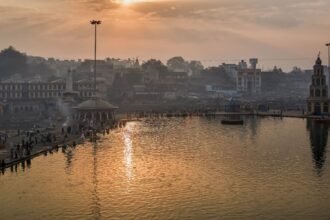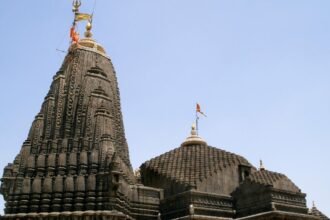Each year, millions gather at the sacred site of Kumbh Mela with one unifying purpose—to immerse themselves in the holy waters of the Godavari River. Yet, before this transformative moment, a quiet but powerful tradition is observed by many: Kumbh Mela fasting before the holy dip.
Far from being a simple act of self-denial, fasting at the Kumbh is a spiritual preparation. It cleanses the body, sharpens the mind, and readies the soul to absorb the divine vibrations that flow through the river during the Mela.
Kumbh Mela fasting before the holy dip
In Hindu philosophy, fasting (upvas or vrat) is a means of inward purification. It is not an act of punishment, but one of devotion. The goal is to make the self a vessel worthy of receiving sacred energy. At Kumbh Mela, fasting before the holy dip allows the devotee to:
- Step away from worldly attachments
- Concentrate fully on spiritual intentions
- Prepare mentally and physically for the Snan
- Earn punya (spiritual merit) through discipline
The Godavari River is revered as a living goddess. Fasting before stepping into her waters is a gesture of humility, readiness, and sacred respect.
Also read : Kumbh Mela and the Four Yugas
Common Types of Fasting Observed
Pilgrims choose their fasting method based on age, health, and spiritual discipline. The most observed fasts at Kumbh Mela include:
- Nirjala Vrat – No food or water at all; the most austere form
- Phalahar Vrat – Limited to fruits, milk, and water
- Ekadashi Fasting – Observed two days before bathing, especially by Vaishnavas
- Partial Fasting – Skipping one or two meals or eating only once a day
During the fasting period, many also engage in silence, mantra chanting, light yoga, and meditation to purify the mind alongside the body.
When Do Devotees Begin Their Fast?
Fasting typically starts:
- On the evening before the planned Snan day
- During auspicious lunar dates like Ekadashi, Purnima, or Amavasya
- While en route to Nashik, as part of one’s pilgrimage vow
Once the Snan is completed, devotees break their fast with a sattvic meal, often prepared without onion or garlic, offered in gratitude for divine blessings.
Scriptural Roots of the Practice
Hindu scriptures such as the Skanda Purana and Dharma Shastras emphasise fasting before visiting tirthas (holy sites). According to Skanda Purana:
“Fasting loosens the grip of karma and clears the path for divine blessings.”
Since the Godavari is believed to flow with Amrit (nectar of immortality) during Kumbh Mela, fasting becomes the spiritual gateway to absorbing its transformative energy.
Physical and Mental Benefits of Fasting
Beyond the spiritual purpose, fasting has practical advantages for pilgrims navigating the demanding conditions of the Kumbh Mela:
- Enhances digestion and detoxifies the body
- Promotes calm and clarity of mind
- Helps manage physical strain, long queues, and crowded spaces
- Creates a mental stillness ideal for reflection and spiritual practices
In this way, fasting is not just an act of devotion—it is holistic preparation for a profound inner experience.
Cultural Practices Around the Fast
Fasting is often accompanied by traditional devotional acts, including:
- Lighting a diya and offering prayers to Ganga Mata or Godavari Mata
- Performing Surya Arghya—offering water to the rising sun
- Reading sacred texts such as the Bhagavad Gita or Ramayana
- Attending satsangs and discourses at Akhara camps
These rituals help heighten spiritual awareness and intensify the sacred energy leading to the Snan.
The Dip After the Fast: A Moment of Rebirth
After the fast, devotees step into the Godavari and experience a deeply emotional and symbolic moment:
- Offerings of flowers, basil, and coconuts are made to the river
- Chants like “Har Har Mahadev” or “Godavari Mata ki Jai” fill the air
- Many feel tears of release, joy, or inner peace
- The fast is broken with prasad or a simple meal, often shared with fellow pilgrims
This act is seen as a rebirth, a shedding of karma, ego, and past burdens.
Final Thoughts
Kumbh Mela fasting before the holy dip is far more than abstaining from food—it is an act of devotion, preparation, and reverence. It allows pilgrims to arrive not just physically, but spiritually cleansed at the sacred waters of the Godavari.
If you’re preparing for Kumbh Mela 2027 in Nashik, consider observing a fast. In the quiet hunger, you may discover a deeper connection to your faith, your purpose, and the universal rhythm that guides us all.
Because in that moment of stillness—before the sacred dip—you may not just meet the river. You may meet your truest self.








